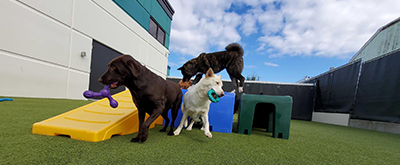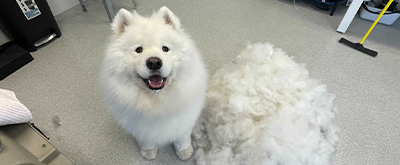Dogs mainly use body language to communicate their thoughts and feelings. Dogs use "calming signals" (also referred to as "stress signals" or "displacement behaviors") to calm themselves, others, and help diffuse situations. Many of these signals naturally go unnoticed as most people don't know how to identify and interpret them. With a little bit of help you can begin to better understand what your dog is trying to communicate to you!
Dog Calming Signals
You may be familiar with some calming signals, but do not recognize others - and that's ok! Dogs speak an entirely different language than humans, and it takes time and education to understand it.
Play Bow
A play bow is a more widely recognized dog calming signal. These can be interpreted as just that; an invitation to play. A play bow is used when a dog is interacting with a shy dog or is trying to engage in a playful activity. A play bow is also a useful indicator that the dog is happy and in a relaxed environment. Some dogs may choose to play bow when they need to pause for a second or figure out what they would like to do next.
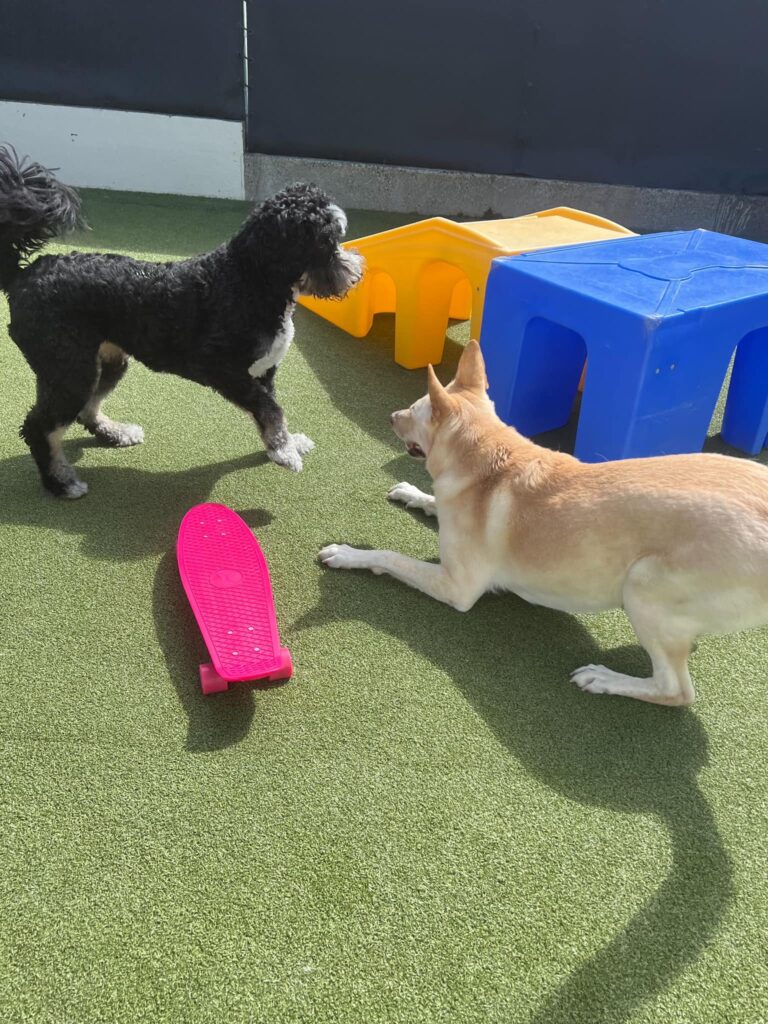
Lying Down
Laying down may be a response to stress (if the situation is stressful) and done to cut off an interaction, self-soothe, or tell others "I am not a threat". The position your dog lies down in can help determine why your dog is laying down. If your dog exposes their chest and stomach then typically this is a form of appeasement ("I am not a threat").
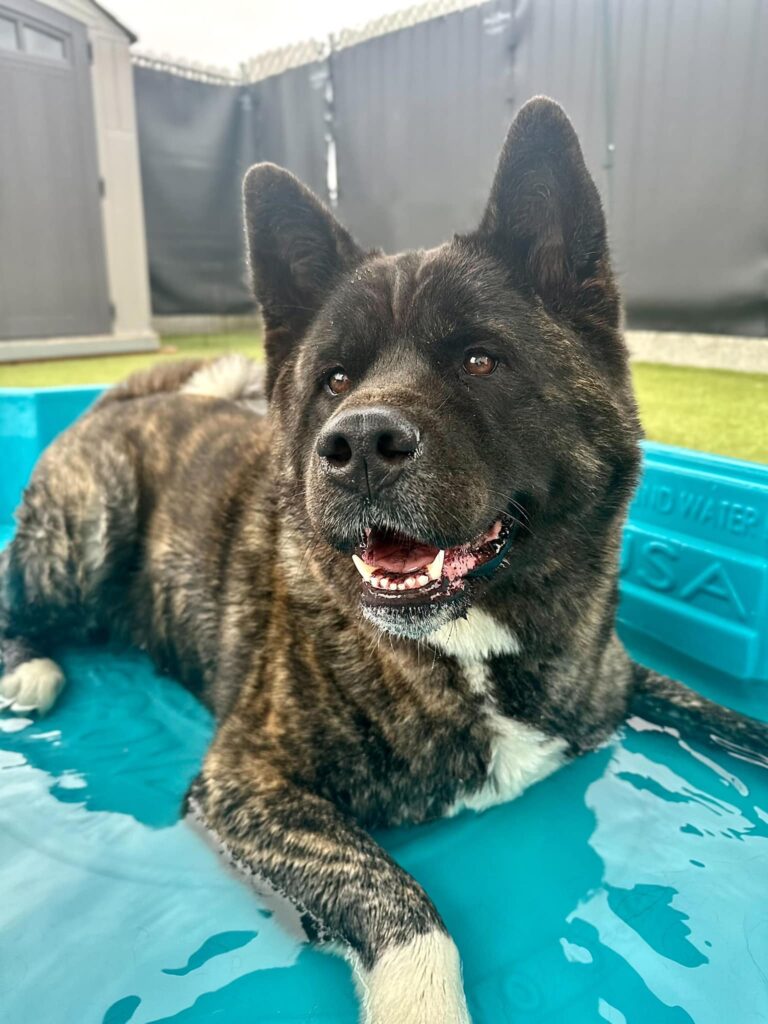
Gaze Aversion
One of the first things a dog will do when they are feeling uncomfortable is look away from what's making them feel that way! This can be as subtle as a quick glance away. If a dog is averting their gaze from you as you approach, slow down and go at the dog's own pace.
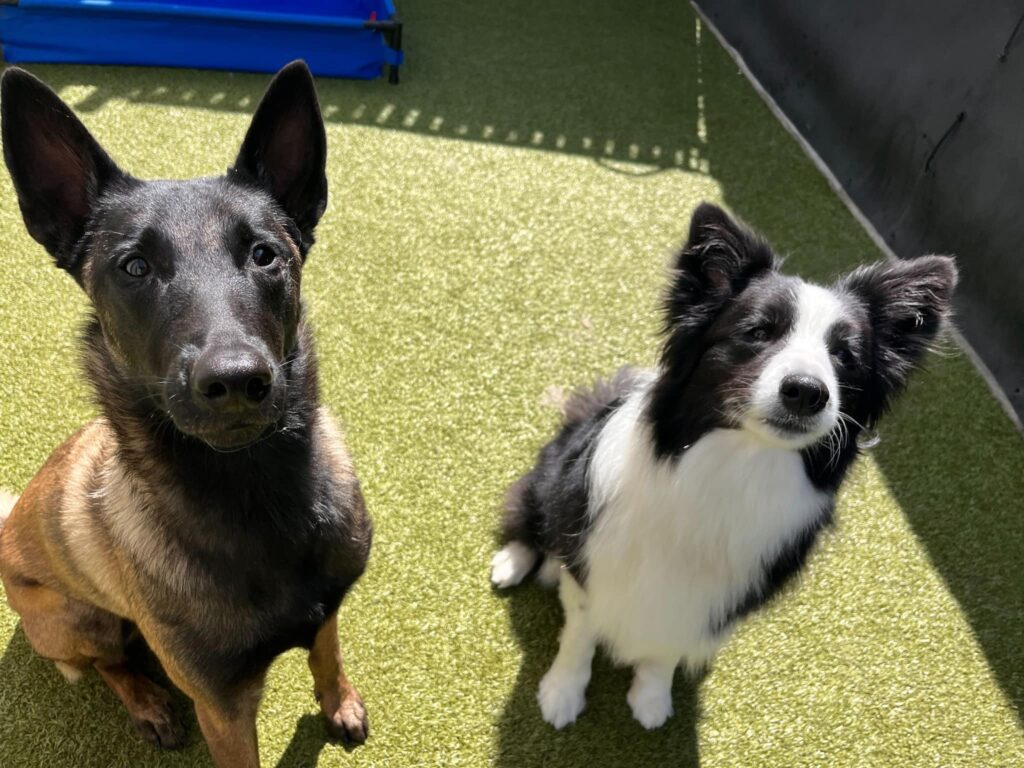
Smiling
Believe it or not, dogs can smile too! This appeasement gesture is typically reserved for humans. This occurs when dogs pull the corners of their mouth or lips back and show their teeth. Do not mistake for growling or snarling. If this is accompanied by a tense body, growling, snapping, or lunging then it is certainly not a smile. The smiling dog is still loose, wiggly, and attention seeking. Note that the dogs pictured below are not displaying the "smile" discussed in this blog - but they sure are happy!
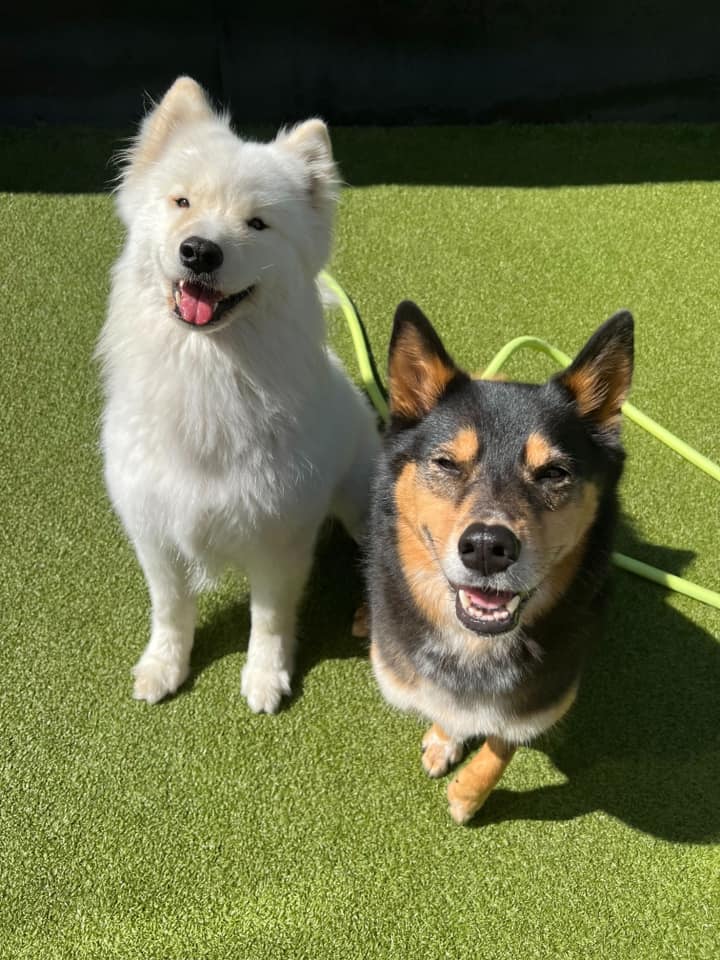
Sniffing the Ground
When a dog repeatedly sniffs the ground around them, it may be a calming signal. What this means is that they are disengaging with whatever is happening around them (also known as a "cut off" signal). This can be a good way for a dog to stop an interaction or avoid conflict! An example of this is a dog stopping to sniff the ground in the middle of a game of chase. A sniffing dog is likely letting their play partner know they are no longer interested in playing.
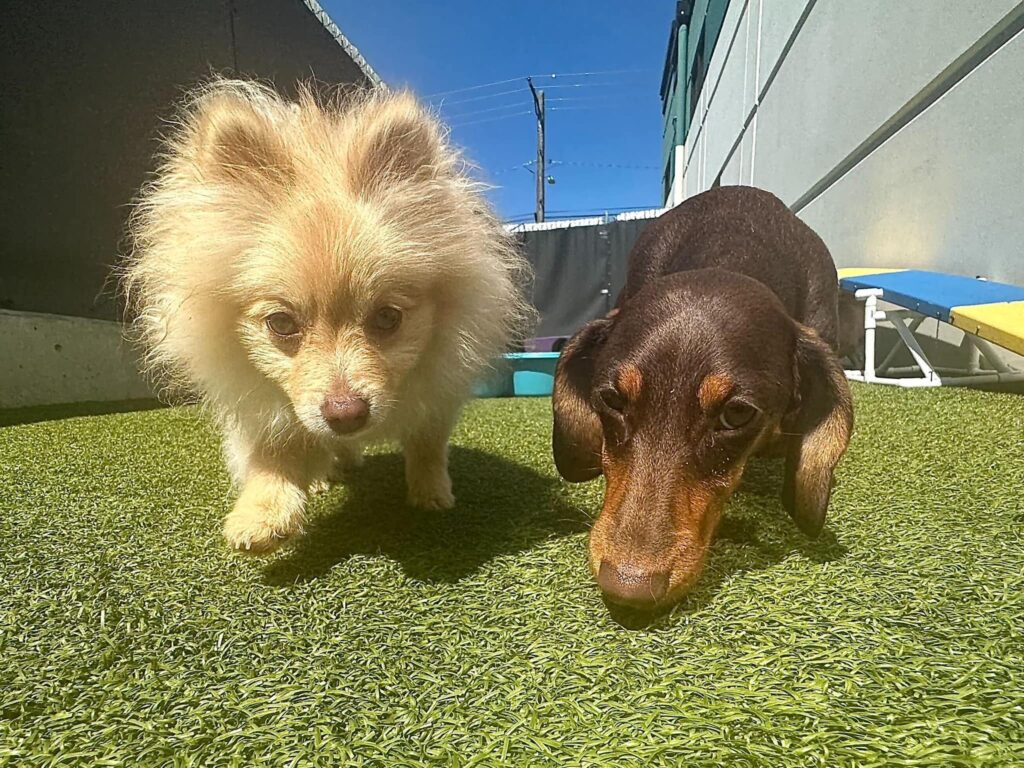
Stretching
Stretching is another great indicator that a dog is trying to calm themselves or others. This is often an exaggerated stretch - and is very cute to watch!

Soft Eyes/Face and/or Blinking
Softening the eyes and face is a subtle dog calming signal. As opposed to a direct stare with face tension which is interpreted as a sign of intimidation. Squinting of the eyes with a relaxed face and repetitive blinking is not. All dogs blink their eyes, a purposeful and consistent frequency of blinks will indicate that the blinking is a calming signal.
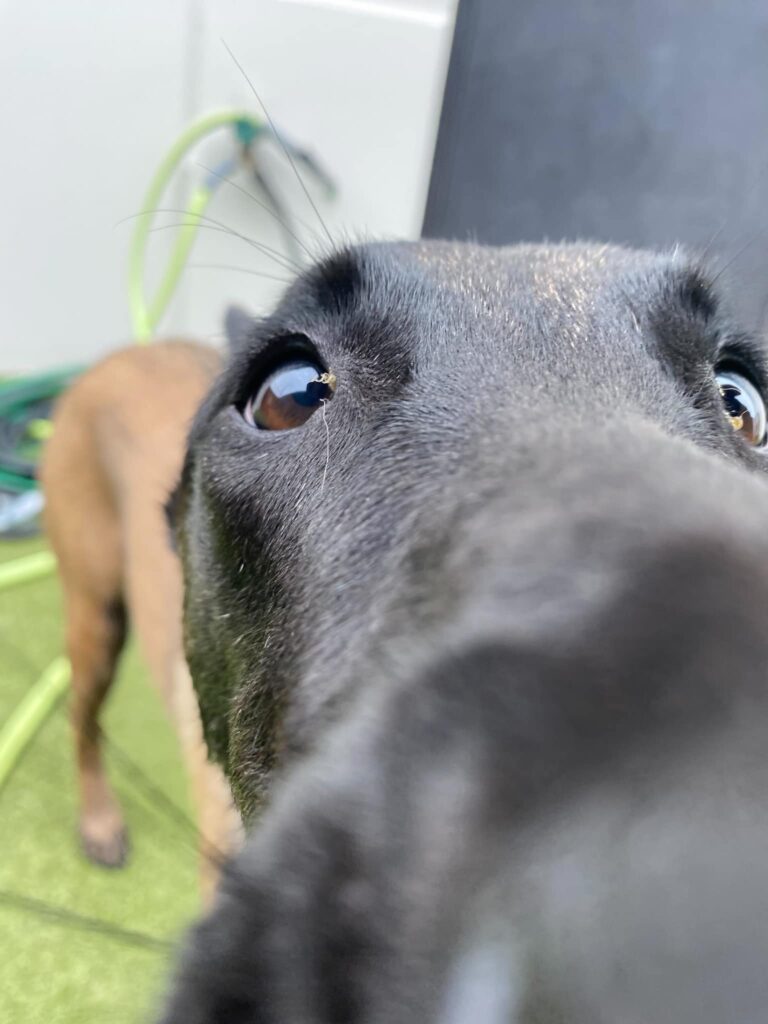
At Biscuits Doggie Daycare and Pet Resort, trained professionals work with you and your dog in order to better identify and interpret dog calming signals. Get in touch with a professional dog trainer at Biscuits Doggie Daycare and Pet Resort to learn more!
